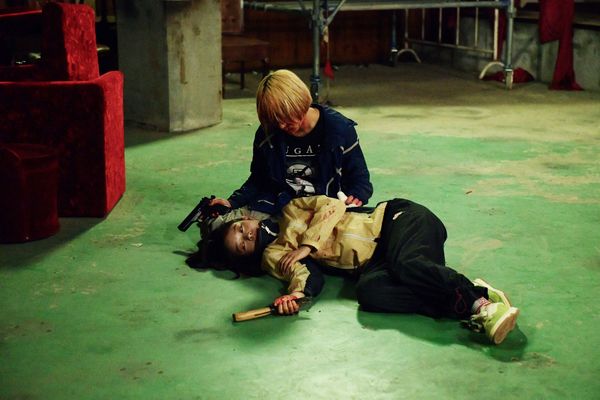Eye For Film >> Movies >> Baby Assassins: Nice Days (2024) Film Review
Baby Assassins: Nice Days
Reviewed by: Jennie Kermode

Since they blasted their way into cinemas in 2021’s Baby Assassins, Chisato (Akari Takaisi) and Mahiro (Izawa Saori) have developed a massive fan base, endearing themselves to viewers with their childlike banter and wowing them with their fighting prowess. Last year’s Baby Assassins 2: Babies proved they had more strings to their bow and explored different aspects of their still-developing friendship. Now they’re back (after another trip to the Fantasia International Film Festival) with a third instalment, which sees the focus switch from comedy and character building to all out action. It’s an approach which makes great use of the film’s driving talents, but a little of what made the franchise unique is lost in the process.
As the story opens, our heroines are on holiday, enjoying sun, sea and sand in Miyazaki and looking forward to an indulgent beef-based dinner for an upcoming birthday. At least, that’s how they look at it. They’re actually there to do a job. Some company owner wants an embezzling employee dealt with. Hardly a dangerous target. They reckon it’ll take them 15 minutes to do – but they reckon without encountering another assassin in the process.

This is Kaede Fuyumura (Sosuke Ikematsu), a freelancer who takes his craft vey seriously. he has dedicated himself to completing 150 separate assassination jobs (some of them involving large numbers of targets), after which he plans to retire and do something different with his life. The embezzler is number 150. Chisato and Mahiro, however, are concerned about the implications of letting an outsider claim their target, and it turns out that their employers feel similarly. Before long they have been assigned teammates – affable hands-on killer Nananse Riku (Otani Mondo) and career-focused rules-stickler Iruka Minami (Maeda Atsuko) – with whom they will have to learn to get along in order to take out the competition once and for all.
Although both young stars are fantastically capable stunt performers, there’s no denying that Izawa has the edge. She’s the kind of talent that comes along once in a generation, and accordingly she’s foreground much more here, though smart decisions about the types of fighting we see early on means that we can still buy into the girls’ bickering about who is best. As well as impressing viewers, Mahiro catches the eye of Kaede, who, since he mastered his craft, seems to have lacked any truly worthy opponent, and is excited to be up against somebody whose skills really test him. Though they find themselves on opposite sides, there’s an understanding between them that seems impossible for either of the girls to find with the brittle Minami, who disapproves of everything they do, from the way they dress to the gossip they share to innocent things like drinking beer and falling asleep on the job.
The fight scenes here are highly creative, further developing the signature move introduced by Izawa in the second film but adding a lot more besides. Minor characters are dispatched with ease – fortunately there are a lot of them – but with enough variety to keep things entertaining. The one-on-one action set pieces, however, are where the film really comes alive, and for fans of martial arts cinema, this is a must see. Director Sakamoto Yugo keeps the film rattling along between these but knows when to strip everything else back. Giving the leads large, empty rooms to fight in means that props don’t really come into play; instead they have to extend the possibilities offered by their bodies, and in the process they achieve things never really seen on film before.
The downside of this is that the amount of time devoted to fights, together with an overall more serious tone, robs the film of some of the sweetness that made previous instalments stand out within the genre. One wonders if this decision has to do with the fact that the girls are getting older, and won’t be baby assassins for much longer – yet it still feels like there’s a good bit of mileage in the concept, so one can only hope that, in making this transition, it doesn’t lose its distinctive personality.
Reviewed on: 10 Aug 2024















